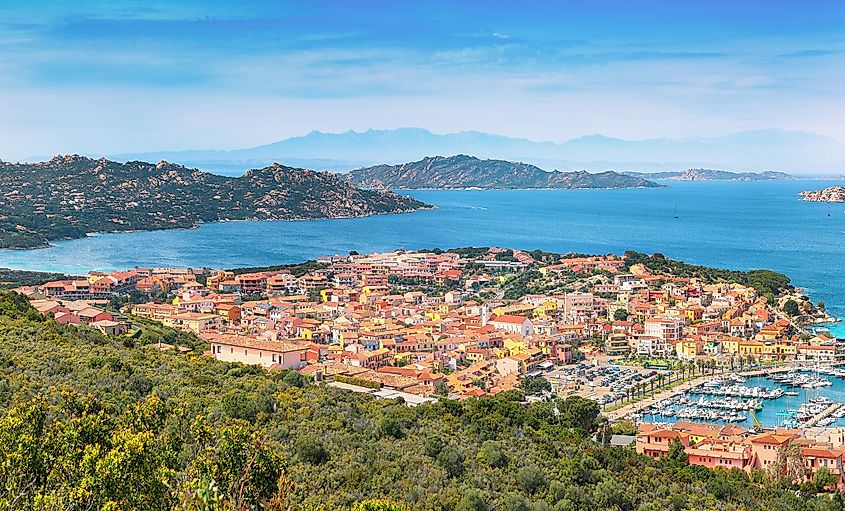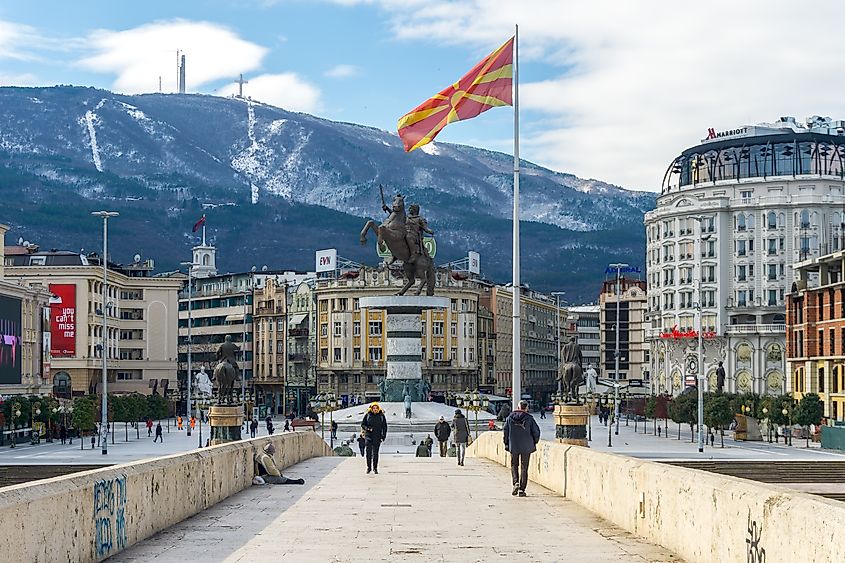
The 10 Newest Countries In The World
A country is defined as any land area that functions as its own independent political unit under the control of its own government. Currently, the United Nations recognizes 193 countries and two non-member observer states, taking the total to 195 universally recognized countries. Nevertheless, several new countries have formed over the years due to the dissolution of an existing country or the breaking off of an existing territory that had been trying to establish itself as a new sovereign nation. For example, the dissolution of the USSR led to the formation of about 15 new nations, all of which joined the UN between 1991 and 1993. The following article discusses some of the newest countries in the world.
- South Sudan - July 2011
- Montenegro - June 2006
- Serbia - June 2006
- East Timor/Timor-Leste - May 2002
- Palau – October 1994
- Eritrea – April 1993
- Czech Republic – January 1993
- Slovakia – January 1993
- North Macedonia - September 1991
- Croatia – June 1991
1. South Sudan - July 2011

Formally referred to as the Republic of South Sudan, this landlocked East-Central African nation gained independence from the Republic of the Sudan on July 9, 2011, after several years of conflict between the two countries. About 98.83% of the country’s population voted for the independence of South Sudan in a referendum held between the 9th and 15th of January 2011. However, despite its official independence, South Sudan continues to remain in conflict with Sudan for the division of the oil revenues, as about 75% of the oil reserves of Sudan are in the present South Sudan territory. Moreover, since December 2013, South Sudan has witnessed a civil war that has led to the death of approximately 400,000 people and left another 4 million displaced.
2. Montenegro - June 2006

Montenegro is a small mountainous country situated in the Balkans in Southeastern Europe. In 1991, the single nation of Serbia and Montenegro was formed after the collapse of Yugoslavia. In 2003, this became the State Union of Serbia and Montenegro. Finally, on May 21, 2006, the "referendum on Montenegrin independence" was held, where 55.5% of the electorate voted for the country's independence. Confirming the results of the referendum, the independence of Montenegro was declared by the Montenegrin Parliament on June 3, 2006. Montenegro's independence was eventually recognized by the United Nations Security Council's permanent members, the European Union member states, and Serbia.
3. Serbia - June 2006

Serbia is a landlocked country situated at the meeting point of the Carpathian Basin and the Balkan Peninsula in Southeastern Europe. Serbia became an independent nation in 2006 after the peaceful dissolution of its confederation with Montenegro. Serbia has a rich history, with several people living in the area since the Paleolithic Age. Starting from the 16th century till the beginning of the 19th century, Serbia was a part of the Ottoman Empire. In the mid-19th century, the Serbian Revolution led to the establishment of a nation-state and the region’s first constitutional monarchy. After World War I, Serbia joined other South Slavic nations and founded the erstwhile Kingdom of Yugoslavia.
4. East Timor/Timor-Leste - May 2002

Officially referred to as the Democratic Republic of Timor-Leste, East Timor is an island country occupying the eastern half of Timor Island, the adjacent islands of Atauro and Jaco, and an exclave named Oecusse in Southeast Asia. On May 20, 2002, Timor-Leste became a new sovereign state after gaining independence from Indonesia. This small island nation has a long history of colonization. In the 16th century, East Timor became highly influenced by the Portuguese and remained a Portuguese colony till 1975. Many years of internal conflict led to a "unilateral" declaration of independence, further inviting atrocities in the entire region, with the citizens being attacked by pro-Indonesian militias. A special UN force had to be deployed, and in 1999, an UN-sponsored East Timor Special Autonomy Referendum led Indonesia to relinquish the territory's control.
5. Palau – October 1994

Formally referred to as the Republic of Palau, Palau is an island nation situated in the western Pacific Ocean, geographically forming a part of the bigger Micronesia island group. Palau officially became independent on October 1, 1994. Initially settled by migrants from Maritime Southeast Asia approximately 3,000 years ago, the Jesuit missionary Paul Klein first drew Palau on a European map. In 1885, Palau islands became a part of the Spanish East Indies. In 1898, after the defeat of the Spanish in the Spanish-American War, the Palau islands were sold to Germany and were administered as German New Guinea. The League of Nations made these islands a part of the South Seas Mandate after World War I. During World War II, several battles were fought here between the American and Japanese forces. In 1947, the islands became a part of the US-led Trust Territory of the Pacific Islands. In 1978, Palau refused to join the Federated States of Micronesia due to cultural and linguistic differences. Palau became a sovereign nation in 1994 under a "Compact of Free Association," an international agreement with the US.
6. Eritrea – April 1993

Officially referred to as the State of Eritrea, Eritrea is an East African country situated in the Horn of Africa region. Modern-day Eritrea was created due to the incorporation of several independent kingdoms, which led to the formation of Italian Eritrea. In 1942, with the defeat of the Italian colonial army, Eritrea came under British rule until 1952. On September 15, 1952, the Eritrean Autonomous State was established under the Ethiopian Federation by the United Nations. In 1962, the annexation of the entire region by the Ethiopian Emperor Haile Selassie started a civil war that lasted for the next 30 years. The Eritrean War of Independence, fought by the Eritrean Liberation Front, resulted in the “de facto independence” of Eritrea in 1991. After an independence referendum, Eritrea gained “de jure independence” from Ethiopia on April 27, 1993.
7. Czech Republic – January 1993

The Central European landlocked country of the Czech Republic also called Czechia, emerged as a new country following the dissolution of Czechoslovakia. In the aftermath of World War I and the collapse of the Austro-Hungarian Empire, the territory of the current Czech Republic became part of the First Czechoslovak Republic or Czechoslovakia, a parliamentary democracy. However, the area came under the control of Nazi Germany in 1938 and remained so till 1945. In 1948, Czechoslovakia was incorporated as an Eastern Bloc communist state. After years of struggle for freedom, the Velvet Revolution of 1989 finally restored democracy. Czechoslovakia was dissolved in 1992, and the Czech Republic and Slovakia emerged as independent countries that were incorporated into the United Nations in January 1993.
7. Slovakia – January 1993

Slovakia, also a landlocked Central European country and a highly mountainous one, shares the same history of independence as the Czech Republic. It was formed following the dissolution of Czechoslovakia and became a United Nations member on January 1, 1993. Today, both these countries are also members of the European Union, the Council of Europe, NATO, and other international organizations.
9. North Macedonia - September 1991

The Southeast European landlocked country of North Macedonia gained independence in 1991. It is one of the successor states of Yugoslavia. During World War I, Bulgaria ruled the territory that is now North Macedonia. Control of the area shifted to Serbia at the end of the war. Bulgaria, however, once more captured the territory during World War II. In 1945, it became a constituent state of Yugoslavia and remained so till the dissolution of Yugoslavia in 1991. Initially, there was a name dispute as a region in Greece was also called Macedonia. Due to this issue, the United Nations initially admitted the country with the provisional name of FYROM (former Yugoslav Republic of Macedonia) in 1993. Later, the dispute was resolved when Macedonia adopted the new name of "Republic of North Macedonia" in February 2019.
10. Croatia – June 1991

Formally referred to as the Republic of Croatia, Croatia is situated at the junction of Central and Southeastern Europe. Croatia declared independence on June 25, 1991, after the cessation of its association with the Socialist Federal Republic of Yugoslavia. However, this triggered the Croatian War of Independence, which was fought between the government-loyal Croat forces and the Yugoslav People’s Army controlled by the Serbs, from 1991 to 1995. Currently, Croatia is a member of several international organizations, including the United Nations, the European Union, the Union for the Mediterranean, and the World Trade Organization.
| Rank | Country | Year of formation | Capital |
|---|---|---|---|
| 1 | South Sudan | July 2011 | Juba |
| 2 | Montenegro | June 2006 | Podgorica |
| 3 | Serbia | June 2006 | Belgrade |
| 4 | East Timor | May 2002 | Dili |
| 5 | Palau | October 1994 | Ngerulmud |
| 6 | Eritea | April 1993 | Asmara |
| 7 | Czech Republic | January 1993 | Prague |
| 7 | Slovakia | January 1993 | Bratislava |
| 9 | North Macedonia | September 1991 | Skopje |
| 10 | Croatia | June 1991 | Zagreb |











